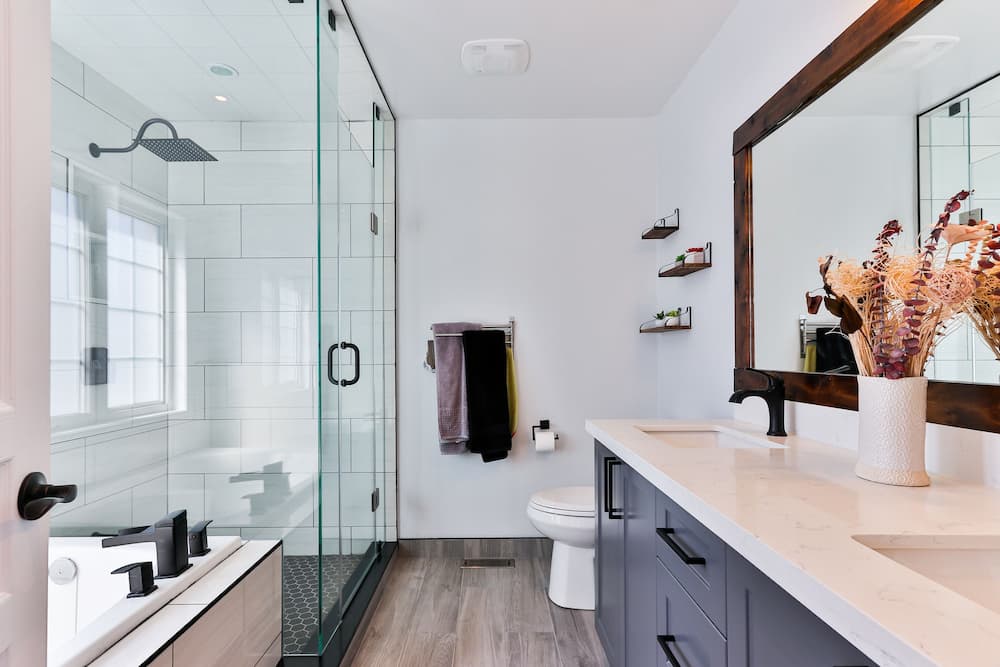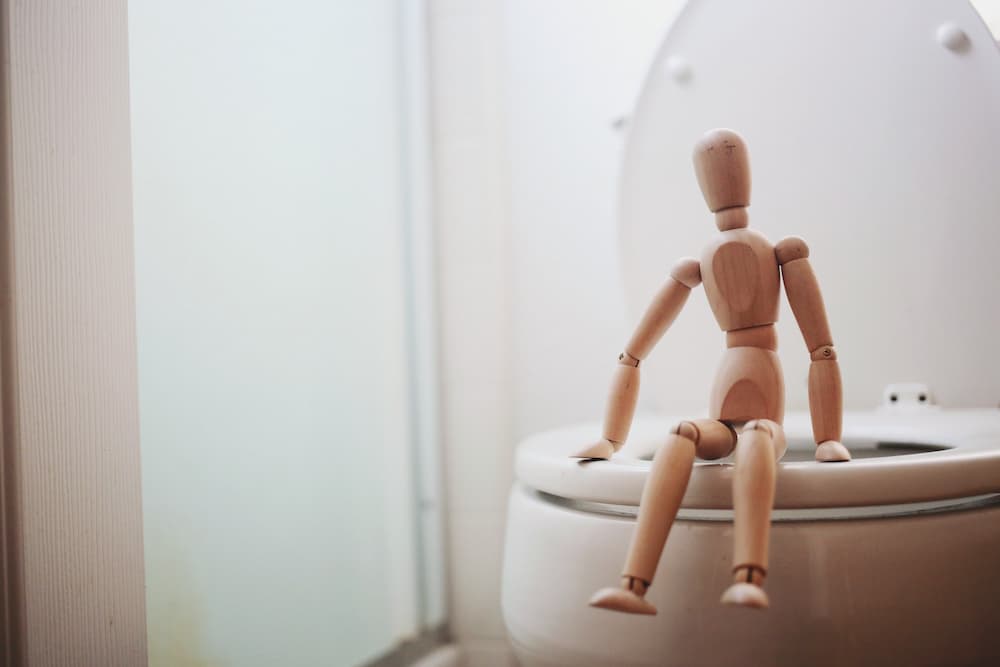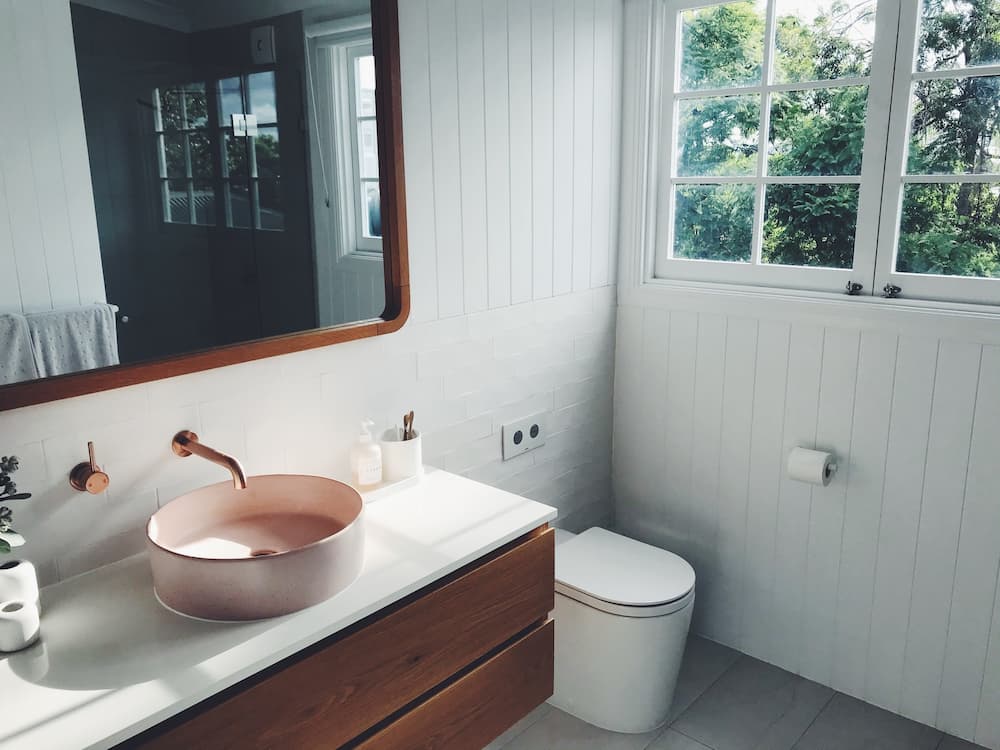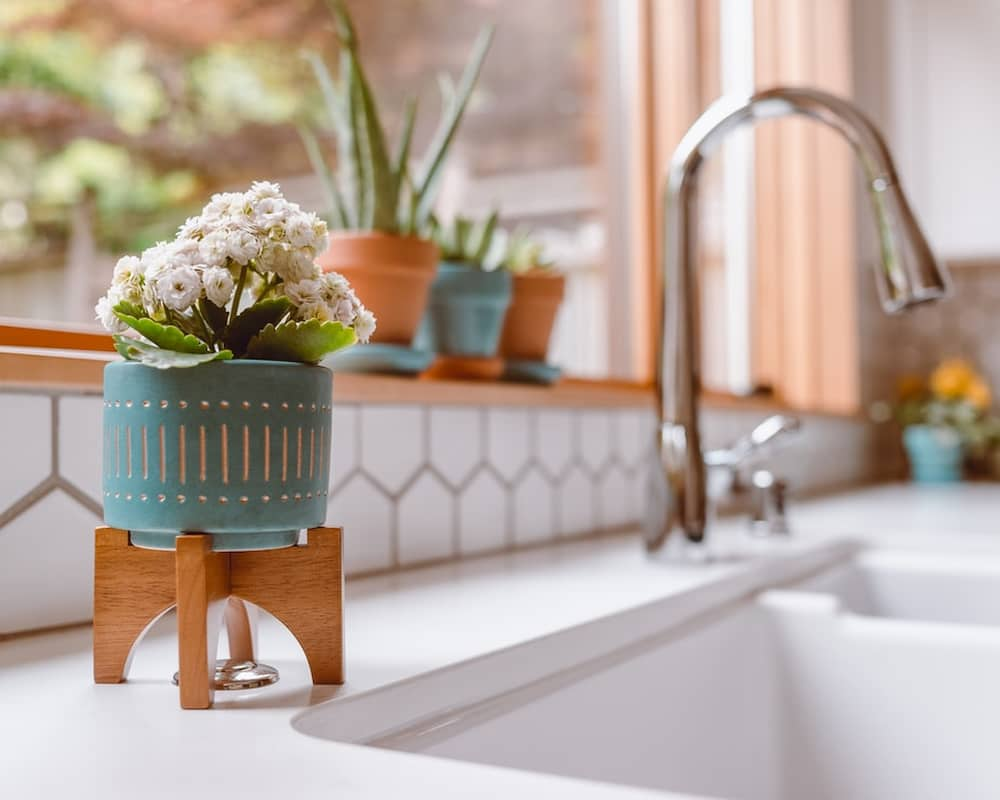* We independently evaluate all recommended products and services. If you click on links we provide, we may receive compensation.
For many, a steam shower has become a trendy self-care, at-home spa experience, but what is a steam shower? Essentially, it is a shower where you create a warm-vaporous experience in your bathroom shower stall. It offers benefits for your skin, sinuses, and aids in detoxification. It allows you to sit in a sauna-like steam room, after which you rinse yourself with colder water.
Furthermore, it is based on the mechanism of heating cold water from your pipes to produce steam in the shower for a luxury experience. You can get one installed at home, which often involves purchasing a steam generator. The generator must be placed strategically – about 25 feet from the shower stall as it is, after all, an electrical unit. They often cost about $2,500 but can increase in cost with extra features like an Mp3 dock, pump for oils, and more. The most famous steam shower manufacturers are Thermasol, Amerec, Steamist, and Mr. Steam.
This step-by-step guide discusses certain preliminary steps and factors to consider before getting a steam shower installed. While you can try to install steam showers yourself, it is not recommended. It has complex equipment involved, which requires you to get professional installation. However, most systems can be installed for $10,000 or less – including the system cost.
- Preliminary Steps (Steps 1-3)
- Factors to Consider (Steps 4-8)
Preliminary Steps (Steps 1-3)
Before choosing and getting a steam shower, you need to make certain decisions and perform some steps:
1. Installation types
There are two kinds of installations to choose from Retro Fit or new. Retro Fit installation involves replacing an old system with a new one. For example, if you have been using your old steam system for about 10-20 years, you can consider replacing it. This involves investing in a new generator with your existing plumbing and updating the older controls.
New Installation, however, includes purchasing a new steam shower system. The construction is also from scratch because the addition of a new shower becomes difficult.
2. Taking the measurements
Before you look for a steam shower, you need to measure the shower stall in your bathroom. However, if you have a bathtub, you will have to get a shower stall instead because these systems only work with showers.
Measure the height, width, and length of the space of the shower stall. Many steam shower companies allow you to enter the measurements on their websites, which then recommend a generator based on those.
3. Choosing the materials
You will need to decide which material you want to use for your steam shower, for example, natural stone, acrylic, fiberglass, porcelain, glass, ceramic, etc. You can also get an interior designer for this purpose.
This is important because different properties require specific kinds of power to make sure the generator is at the right temperature for it to be able to dispense the steam appropriately. Often, marble, granite, glass, and concrete materials are more porous and thus dispense heat more quickly.
If your shower stall is made of marble or stone, you will need a relatively more powerful generator that can offset the heat loss faster. However, if you go with non-porous materials like acrylic, porcelain, or ceramic, then they will retain more heat, and so, a smaller generator will do the job well.
Factors to Consider (Steps 4-8)
Steam showers can be installed easily with the help of professionals, but there are still some factors that need to be considered.
4. Generator's location
While the steam shower itself is located inside the stall, the generator is not. It should be as close to the stall as possible, so the generator's pipes and other electrical lines are minimal in length. The generator and the cold-water supply must be tied to create a water inlet. The generator's location must also be close to the drain.
Essentially it would be best if you were placed somewhere accessible, so it is easily serviced after installation. Depending on the house's layout, the placement has to be safe, strategic, and close to the bathroom with the steam shower.
5. Electrical access
Depending on the steam shower system you purchase, you have to see whether the voltage is suitable for your electric system. You should ideally consult an electrician for a better idea. It will either be 280 or 240V of power.
6. The drainage system
This is perhaps a factor most overlooked; that is where the water will drain into? Many people don't know that steam shower units need to be drained properly to keep the insides of the tanks clean. Improper drainage shortens the life of the generator and will cost you a lot. These systems either drain or terminate, either have runoff or a garden bed, a drain stack, or in the shower itself.
7. Location of the steam head and controller
You must know that you can't install the controller of the shower above the steam head. Many people make this mistake during installation. Controllers come with temperature sensors, which get damaged easily when installed right above the steam head. This renders the controller ineffective. The controller should ideally be installed on the wall opposite the steam shower head.
8. Choosing a system
As mentioned above, there are many manufacturers to choose from. They all have their unique designs, so choosing one is completely up to you. Thermasol, for instance, comes with features like power flush, convection steam head, smart steam, and digital controls.
Mr. Steam, on the other hand, is the only system with a wireless control system and is thus a great Retro Fit system. In addition, it comes with Aroma Therapy which adds to your steam shower by providing aroma options such as lavender, eucalyptus, and more.



